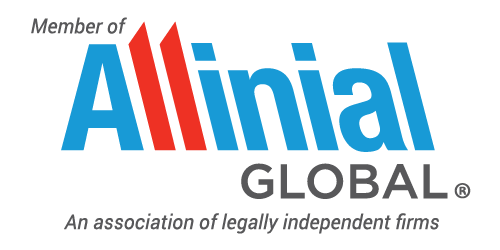Verifying Your Identity When Calling the IRS
Sometimes, taxpayers must call the IRS about a tax matter. As part of the IRS’s ongoing efforts to keep taxpayer data secure from identity thieves, IRS phone assistors take great care to discuss personal information with the taxpayer or someone the taxpayer has authorized to speak on their behalf. Therefore, the IRS will ask taxpayers and their representatives to verify their identity when they call.
Calling the IRS About Your Own Tax Matter
You should have the following information ready before calling the IRS:
- Social Security numbers (SSNs) and birth dates for those who were named on the tax return
- An Individual Taxpayer Identification Number (ITIN) letter if you have one instead of an SSN
- Your filing status: single, head of household, married filing jointly, or married filing separately
- Your prior-year tax return, because phone assistors may need it to verify taxpayer identity with information from the return before answering certain questions
- A copy of the tax return in question
- Any IRS letters or notices you have received
Legally Designated Representatives
By law, IRS telephone assistors will speak only with the taxpayer or to the taxpayer’s legally designated representative. In other words, a taxpayer can grant authorization to a third party to help with federal tax matters. Depending on the authorization, the third party can be a family member, friend, tax professional, attorney, or business. The different types of third-party authorizations include:
- Power of Attorney – Allow someone to represent you in tax matters before the IRS. This is different from a power of attorney for property who you authorize to manage your financial affairs. It must be an individual authorized to practice before the IRS.
- Tax Information Authorization – Appoint anyone to review and receive your confidential tax information for the type of tax and years/periods you determine.
- Third Party Designee – Designate a person on your tax form to discuss that specific tax return and year with the IRS.
- Oral Disclosure – Authorize the IRS to disclose your tax information to a person you bring into a phone conversation or meeting with the IRS about a specific tax issue.
Taxpayers must meet all of their tax obligations even when authorizing someone to represent them.
Calling on Behalf of Someone Else
If you are calling the IRS about someone else’s account, you should be prepared to verify your identity and provide information about the person you represent. Before calling about a third party, you should have the following information available:
- Verbal or written authorization from the taxpayer to discuss the account
- The ability to verify the taxpayer’s name, SSN or ITIN, tax period, and tax forms filed
- Identity Protection PIN (IP PIN)
- One of these forms, which is current, completed, and signed: Form 8821, Tax Information Authorization or Form 2848, Power of Attorney and Declaration of Representative
Keep in mind that if your tax professional is calling the IRS on your behalf, your tax pro will need to have this information about you, except generally a Preparer Tax Identification Number (PTIN) instead of an IP PIN.
Is Your College Student’s Scholarship Taxable?
May 1 is the traditional deadline for undergraduate students to commit to their college of choice, which means tuition payments are not far behind. If you are wondering if your child’s scholarships are taxable, here is what you should know.
What Is a “Scholarship?”
First, it’s important to understand how a scholarship is defined. Generally, a scholarship is an amount paid or allowed to a student at an educational institution for the purpose of study. It can include both merit and need-based institutional aid.
Other types of grants include need-based grants (such as Pell Grants or state grants) and Fulbright grants. A fellowship grant is generally an amount paid or allowed to an individual for study or research.
Fulbright grants may be either scholarship/fellowship income or compensation for personal services, which is usually considered wages. If you are a U.S. citizen recipient of a Fulbright grant, you must determine which income category your grant falls into to know how the grant is taxed for U.S. Federal Income tax purposes.
Tax-Free vs. Taxable
If your child receives a scholarship, a fellowship grant, or other grant, all or part of the amounts received may be tax-free if your child meets certain conditions.
Scholarships, fellowship grants, and other grants are tax-free if:
- The student is a candidate for a degree at an educational institution that maintains a regular faculty and curriculum and normally has a regularly enrolled body of students in attendance at the place where it carries on its educational activities; and
- The amounts the student receives are used to pay for tuition and fees required for enrollment or attendance at the educational institution or for fees, books, supplies, and equipment required for courses at the educational institution.
However, the student must include in gross income:
- Amounts used for incidental expenses, such as room and board, travel, student health insurance, and optional equipment.
- Amounts received as payments for teaching, research, or other services required as a condition for receiving the scholarship or fellowship grant. However, students do not need to include in gross income any amounts received for services that are required by the National Health Service Corps Scholarship Program, the Armed Forces Health Professions Scholarship and Financial Assistance Program, or a comprehensive student work-learning-service program (as defined in section 448(e) of the Higher Education Act of 1965) operated by a work college.
Reporting a Taxable Scholarship on Your Tax Return
Generally, a student reports any portion of a scholarship, a fellowship grant, or other grants that must be included in gross income as follows:
- If filing Form 1040 or Form 1040-SR, include the taxable portion in the total amount reported on the “Wages, salaries, tips” line of the student’s tax return. If the taxable amount was not reported on Form W-2, enter “SCH” along with the taxable amount in the space to the left of the “Wages, salaries, tips” line.
- If filing Form 1040-NR, report the taxable amount on the “Scholarship and fellowship grants” line.
Estimated Tax Payments May Be Due
If any part of a scholarship or fellowship grant is taxable, the student may have to make estimated tax payments on the additional income. For information on estimated tax, refer to Publication 505, Tax Withholding and Estimated Tax.
What To Know About Reverse Mortgages
Home equity represents a significant portion of the average retiree’s wealth. If you’re 62 or older and house-rich but cash-poor, a reverse mortgage loan allows you to convert part of the equity in your home into cash – without having to sell your home. You can use this cash to finance a home improvement, pay off your current mortgage, supplement your retirement income, or pay for healthcare expenses. A reverse mortgage is not without risk, however.
What Is a Reverse Mortgage?
Reverse mortgages operate like traditional mortgages, only in reverse. Rather than paying your lender each month, the lender pays you. Three types of reverse mortgage plans are available:
- Single-purpose reverse mortgages that are offered by state and local government agencies and nonprofit organizations,
- Federally insured reverse mortgages, also known as Home Equity Conversion Mortgages (HECMs), that are backed by the U.S. Department of Housing and Urban Development (HUD), and
- Proprietary reverse mortgages that are private loans backed by the companies that develop them.
What Are the Benefits of a Reverse Mortgage?
The primary benefit of a reverse mortgage is that it allows eligible homeowners to keep living in their homes and use their equity for whatever purpose they choose. Depending on the lender, borrowers can choose to receive monthly payments, a lump sum, a line of credit, or some combination of these. A line of credit offers the most flexibility by allowing homeowners to write checks on their equity when needed up to the limit of the loan.
Reverse mortgages differ from home equity loans in that most reverse mortgages do not require repayment of principal, interest, or servicing fees as long as you live in the home. Instead, the loan is repaid when you die or sell the home.
The proceeds of a reverse mortgage generally are tax-free, and interest on reverse mortgages is not deductible until you pay off the debt. When you die or move out, the loan is paid off by selling the property. Any leftover equity belongs to you or your heirs.
Many reverse mortgages have no income restrictions. If you receive Social Security Supplemental Security Income, reverse mortgage payments do not affect your benefits as long as you spend them within the month they are received. This rule is also valid for Medicaid benefits in most states.
Who Qualifies for a Reverse Mortgage?
To be eligible for a reverse mortgage, generally you must:
- Be 62 years of age or older.
- Either completely own your home or meet applicable equity requirements.
- Live in the home.
- Be able to pay property taxes and other expenses associated with the property, such as homeowners insurance, maintenance and repairs, and any homeowners association fees.
Maximum Loan Amounts
Maximum loan amounts range (depending on the lender) from 50% to 75% of the home’s fair market value. The general rule is that the older the homeowner and the more valuable the home, the more money will be available. All reverse mortgages have nonrecourse clauses, meaning the debt cannot exceed the home’s value.
Maximum loan amount limits are based on the value of the home, the borrower’s age and life expectancy, the loan’s interest rate, and whatever the lender’s policies are. For example, a homeowner taking out a reverse mortgage through the Federal Housing Administration would be subject to a maximum loan amount – even if the home’s appraised value is more.
The Downsides of Reverse Mortgages
If you plan to move a few years down the road or there is a possibility you will have to move due to illness or any other unforeseen event, then a reverse mortgage probably doesn’t make sense. Additionally, suppose you already have a substantial mortgage on your home. In that case, the reverse mortgage is probably not for you since you must pay it off before becoming eligible. Several additional downsides of reverse mortgages include:
- Incurring a Large Amount of Interest Debt. Reverse mortgages (fixed-rate or adjustable-rate) are rising-debt loans in that the interest is added to the monthly loan balance. Because it is not paid currently, the total interest you owe increases greatly over time as the interest compounds.
- Fewer Assets for Heirs. If you want to pass your home to your children or other heirs, the reverse mortgage is not a good choice because the lender could get most of the equity when the home is sold, leaving fewer assets for your heirs.
- Higher Costs Up Front. The high up-front costs of reverse mortgages may make them less attractive to some people. All three types of plans charge an origination fee, interest rate, closing costs, and servicing fees. Insured plans also charge insurance premiums.
- Adjustable vs. Fixed Interest Rates. With many reverse mortgage plans, interest rates are adjustable annually or monthly and tied to a financial index, sometimes with limits on how far the rate can go up or down. Reverse mortgages with interest rates that adjust monthly have no limit. Remember that the higher the rate, the faster your equity is used.
Small Business Financing: Securing a Loan
At some point, most small business owners will visit a bank or other lending institution to borrow money. Understanding what your bank wants and how to approach it properly can mean the difference between getting a loan for expansion or scrambling to find cash from other sources.
Understand the Basic Principles of Banking
It is vital to present yourself as a trustworthy businessperson, dependable enough to repay borrowed money, and to demonstrate that you understand the basic principles of banking. Your chances of receiving a loan will greatly improve if you can see your proposal through a banker’s eyes and appreciate the position that the bank is coming from.
Banks are responsible to government regulators, depositors, and the community in which they reside. While a bank’s cautious perspective may irritate a small business owner, it is necessary to keep the depositors’ money safe, the banking regulators happy, and the community’s economy healthy.
Each Bank Is Different
While banks in general have a cautious attitude toward lending, they differ in the types of financing they make available, interest rates charged, willingness to accept risk, staff expertise, services offered, and attitude toward small business loans.
Selection of a bank is essentially limited to your choices from the local community. Typically, banks outside of your area will be more reluctant to make loans to you because of the higher costs of checking credit and of collecting the loan in the event of default.
Furthermore, a bank will typically not make loans, regardless of business size, unless a checking account or money market account is maintained at that institution. Ultimately your task is to find a business-oriented bank that will provide the financial assistance, expertise, and services your business requires now and is likely to require in the future.
Building Rapport
Establishing a favorable climate for a loan request should begin long before the funds are needed. The worst possible time to approach a new bank about a loan is when your business is in the throes of a financial crisis. Devote time and effort to building a relationship and goodwill with the bank you choose and early on get to know the loan officer you will be dealing with.
Bankers’ overriding concern generally is minimizing risk. Logic dictates that this is best accomplished by limiting loans to businesses they know and trust. One way to build rapport and establish trust is to take out small loans, repay them on schedule, and meet all loan agreement requirements in both letter and spirit. By doing so, you gain the banker’s trust and loyalty, and the banker will consider your business a valued customer and make it easier for you to obtain future financing.
Provide the Information Your Banker Needs
Lending is the essence of the banking business, and making mutually beneficial loans is as important to the bank’s success as it is to the small business. This means that understanding what information a loan officer seeks and providing the evidence required to ease normal banking concerns is the most effective approach to getting the financing you desire.
A sound loan proposal should contain information that expands on the following points:
- What is the specific purpose of the loan?
- How much money is required?
- What is the source of repayment for the loan?
- What evidence is available to substantiate the assumptions that the expected source of repayment is reliable?
- What alternative source of repayment is available if management’s plans fail?
- What business or personal assets, or both, are available to collateralize the loan?
- What evidence is available to substantiate the competence and ability of the management team?
You need to do your homework before making a loan request because an experienced loan officer will ask probing questions about each of these items. Failure to anticipate such questions or providing unacceptable answers is damaging evidence that you may not completely understand your business and are incapable of planning for its needs.
What To Do Before You Apply for a Loan
1. Write a business plan. Your loan request should be based on and accompanied by a complete business plan. This document is the single most important planning activity you can perform. A business plan is more than a device for getting financing; it is the vehicle that makes you examine, evaluate, and plan for all aspects of your business. A business plan’s existence proves to your banker that you are doing all the right activities. Once you have put the plan together, write a two-page executive summary. You will need it if asked to send “a quick write-up.”
2. Have an accountant prepare historical financial statements. You cannot discuss the future without accounting for your past. Internally generated statements are OK, but your bank wants the comfort of knowing an independent expert has verified the information. Also, you must understand your statement and be able to explain how your operation works and how your finances stand up to industry norms and standards.
3. Line up references. Your banker may want to talk to your suppliers, customers, potential partners, or team of professionals. When a loan officer asks for permission to contact references, promptly answer with names and contact information; do not leave the officer waiting for a week.
Walking into a bank and talking to a loan officer will always be stressful. Preparation for and thorough understanding of this evaluation process is essential to minimize the stressful variables and optimize your potential to qualify for the funding you seek.
Seek Advice From a Tax Professional
The advice and experience of a tax and accounting professional are invaluable. Do not be shy about calling the office.
Tips for Taxpayers With Hobby Income
Hobby activities are a source of income for many taxpayers. As a reminder, this income must be reported on tax returns. But the reporting rules are different than for income from a for-profit business. For one thing, hobbyists can’t deduct their hobby expenses.
A hobby is any activity that a person pursues because they enjoy it without intending to make a profit. When determining whether your activity is a business or hobby, consider the following nine factors:
- Whether the activity is carried out in a business-like manner and you maintain complete and accurate books and records.
- Whether your time and effort in the activity show you intend to make it profitable.
- Whether you depend on income from the activity for your livelihood.
- Whether any losses are due to circumstances beyond your control or are normal for the startup phase of their business.
- Whether you change methods of operation to improve profitability.
- Whether you and your advisors know how to conduct the activity as a successful business.
- Whether you successfully made a profit from similar activities in the past.
- Whether the activity makes a profit in some years and how much profit it makes.
- Whether you can expect to make a future profit from the appreciation of the assets used in the activity.
No one factor is more important than another. If you receive income from an activity carried on with no intention of making a profit, the income must be reported on Schedule 1, Form 1040. Please contact the office if you have any questions about hobby income.
Filing a Final Tax Return for a Deceased Person
When someone dies, their surviving spouse or representative must file a final tax return for the deceased person. Usually, the representative is named in the person’s will or appointed by a court. Sometimes when there isn’t a surviving spouse or appointed representative, a personal representative will file the final return.
The IRS doesn’t need any notification of the death other than noting the death on the final tax return, but there are three things taxpayers should know about filing the final return:
- The surviving spouse generally is eligible to use the married filing jointly or married filing separately filing status when filing the return.
- The final return is due by the regular April tax date unless the surviving spouse or representative files an extension.
Surviving spouses with dependent children may be able to file as a Qualifying Widow(er) for two years after their spouse’s death. This filing status allows them to use joint filer tax rate schedules (which can be beneficial, depending on income level) and, if they don’t itemize deductions, claim the highest standard deduction amount.
Questions?
Don’t hesitate to call if you have any questions about filing a final tax return for someone who has passed away.
Kids’ Day Camp Expenses May Qualify for a Tax Credit
Day camps are common during school vacations and the summer months. And their cost may count towards the child and dependent care credit.
Here are five things parents should know:
1. Care for Qualifying Persons. You may qualify for the credit whether you pay for care at home, at a daycare facility, or a day camp. Your expenses must be for the care of one or more qualifying persons, such as your dependent child under age 13.
2. Work-Related Expense. In other words, you must be paying for the care so you can work or look for work.
3. Expense Limits. The total expense you can claim in a year is limited. The limit is generally $3,000 for one qualifying person or $6,000 for two or more.
4. Credit Amount. The credit is worth between 20 and 35 percent of your allowable expenses. The percentage depends on your income.
5. Excluded Care. Certain types of care don’t qualify for the credit, including:
- Overnight camps, Summer school tutoring,
- Care provided by your spouse or child under age 19 at the end of the year, and
- Care given by a person you can claim as your dependent.
Remember that this credit is not just a school vacation or summer tax benefit. You may be able to claim it at any time during the year for qualifying care.
What to Know About the Adoption Tax Credit
If you adopt a child in 2023, you may qualify for a tax credit for related expenses. If your employer helped pay for the costs of an adoption, you may be able to exclude that income from tax. In 2023, the maximum adoption tax credit and exclusion on a combined basis is $15,950 per child.
An eligible child is one who is under age 18. However, this age limit does not apply to adoptees who are physically or mentally unable to care for themselves.
Adoption expenses must be directly related to the child’s adoption and be reasonable and necessary. Types of qualifying expenses include adoption fees, court costs, attorney fees, and travel.
Qualified adoption expenses reimbursed by your employer through a written qualified adoption assistance program are excluded from tax, but they reduce the amount of qualified adoption expenses available for the credit.A special rule applies if you adopt an eligible U.S. child with special needs and the adoption is final: You may be able to take the full tax credit even if you didn’t pay any qualified adoption expenses.
Both domestic and foreign adoptions qualify for the credit, which may reduce your tax liability to zero. However, the credit is nonrefundable. So if the credit is more than your tax, you can’t get any additional amount as a refund.
Taxpayers should note that the credit and exclusion are subject to income limitations. The limits may reduce or eliminate your tax benefit. If you have any questions or want additional information about the adoption credit and exclusion, don’t hesitate to call.
5 Things To Do Every Time You Open QuickBooks
Usually when people talk about habits, they’re trying to find ways to break bad ones. Sometimes it’s difficult to even trace them back to how they got started. They’ve just become habits.
Starting new ones should be easier than breaking old, established ones. And when it comes to your knowledge about your company’s financial health, it’s good to develop practices that you eventually do without even thinking about them.
QuickBooks offers many ways to:
- Get a quick overview of what’s happening with your money,
- Drill down on the details, and
- Take positive actions.
Here’s what to do every time you start a work session in QuickBooks.
Open the Income Tracker
Go to Customers | Income Tracker. This is the best way to get a quick look at your receivables status. Colored bars across the top of the page show the number of transactions and dollar totals for Unbilled Sales Orders, Unbilled Time & Expenses, Unpaid Open Invoices and Overdue Invoices, and the Amount Paid Last 30 Days. Click any of the bars, and the list below displays only those transactions.

Figure 1: QuickBooks’ Income Tracker can tell you quickly about the status of your receivables.
Click the down arrow under Action at the end of each row, and you can complete related tasks like Create Invoice, Receive Payment, and Email Row. You can also do Batch Actions like Invoice and Batch Email. And you can create new transactions from here.
Look at Your Snapshots
You may have already developed a routine for your QuickBooks minutes and hours. You might send a few invoices and pay a few bills and record payments that have come in since your last session. Those are the things you know about. But what about the hidden tasks and potential problems that you don’t? You might be able to prevent trouble down the road by anticipating it.
QuickBooks’ Snapshots are a good place to start. There are three of them: Company, Payments, and Customer (Company | Company Snapshot). Take a good look at the charts and tables in the first two especially. You can learn a lot in a short period of time.
Check Your Inventory Levels
You certainly don’t instill faith in your customers by running out of items that you’ve said are available. If you don’t keep a close watch on your inventory levels, you risk:
Incurring extra costs to have items shipped to you quickly if you’re a reseller.
Having to drop everything and create new products if you sell one-of-a-kind items, and/or
Losing customers because you can’t fulfill orders rapidly.
One of the things you should be consulting every time you open QuickBooks (if you sell products) is the Inventory Stock Status by Item report. Go to Reports | Inventory to find it. Look at the Reorder Pt (Min) and Available columns. You don’t have to wait until you hit the reorder point. Try to anticipate shortages when products are selling rapidly, and change the Reorder Pt if necessary.

Figure 2: You can set and edit your own Reorder Point when you create an inventory item in QuickBooks.
Check Your Payments to Deposit
Often, funds received from invoice payments and sales receipts go into the Undeposited Funds account. To see this account, go to Company | Chart of Accounts | Undeposited Funds. You should be checking occasionally to see if there is money that needs to be deposited. On the home page, under Banking in the lower right corner, click Record Deposits. QuickBooks will display a list of payments received that haven’t yet been deposited in your bank account.Click in the Select Payment to Deposit column in front of payments you want to deposit. Click OK. Select the correct Deposit to account in the upper left. If you want cash back from this deposit, indicate that in the fields in the lower left. Add a Memo if you’d like and confirm the Date. When you’re done, save the deposit record. Now you can create a physical deposit slip and take it and the checks and/or cash to the bank.
Look at Bill Tracker
If you’re tracking your bills in QuickBooks’ Bill Tracker (this is recommended), you can learn quickly if you have any outstanding bills or any that are coming due soon. Go to Vendors | Bill Tracker. This works just like the Income Tracker. Colored bars at the top of the screen divide your bills into:
- Unbilled purchase orders,
- Unpaid open bills,
- Unpaid overdue bills, and
- Bills paid in the last 30 days.
Check the Due Date column to see where you stand with payables. Options in the Action column include Convert to Bill, Close PO, and Pay Bill.
Make It Second Nature
It may take you some time at first to run through all of these steps. But if you make it a habit, it will start to come naturally – and quickly. There are, of course, additional ways to get a handle on your finances, but if you consult these screens regularly, you’ll have a good idea of actions you need to take and potential problems looming. Remember: If you have any QuickBooks concerns or you’re new to the software, help is just a phone call away.
Tax Due Dates for July 2023
July 10
Employees Who Work for Tips – If you received $20 or more in tips during June, report them to your employer. You can use Form 4070.
July 17
Employers – Nonpayroll withholding. If the monthly deposit rule applies, deposit the tax for payments in June.
Employers – Social Security, Medicare, and withheld income tax. If the monthly deposit rule applies, deposit the tax for payments in June.
July 31
Employers – Federal unemployment tax. Deposit the tax owed through June if more than $500.
Employers – If you maintain an employee benefit plan, such as a pension, profit sharing, or stock bonus plan, file Form 5500 or 5500-EZ for calendar year 2022. If you use a fiscal year as your plan year, file the form by the last day of the seventh month after the plan year ends.
Certain Small Employers – Deposit any undeposited tax if your tax liability is $2,500 or more for 2023 but less than $2,500 for the second quarter.
Employers – Social Security, Medicare, and withheld income tax. File Form 941 for the second quarter of 2023. Deposit any undeposited tax. (If your tax liability is less than $2,500, you can pay it in full with a timely filed return.) If you deposited the tax for the quarter in full and on time, you have until August 10 to file the return.
Any accounting, business or tax advice contained in this communication, including attachments and enclosures, is not intended as a thorough, in-depth analysis of specific issues, nor a substitute for a formal opinion, nor is it sufficient to avoid tax-related penalties. If desired, we would be pleased to perform the requisite research and provide you with a detailed written analysis. Such an engagement may be the subject of a separate engagement letter that would define the scope and limits of the desired consultation services.
































